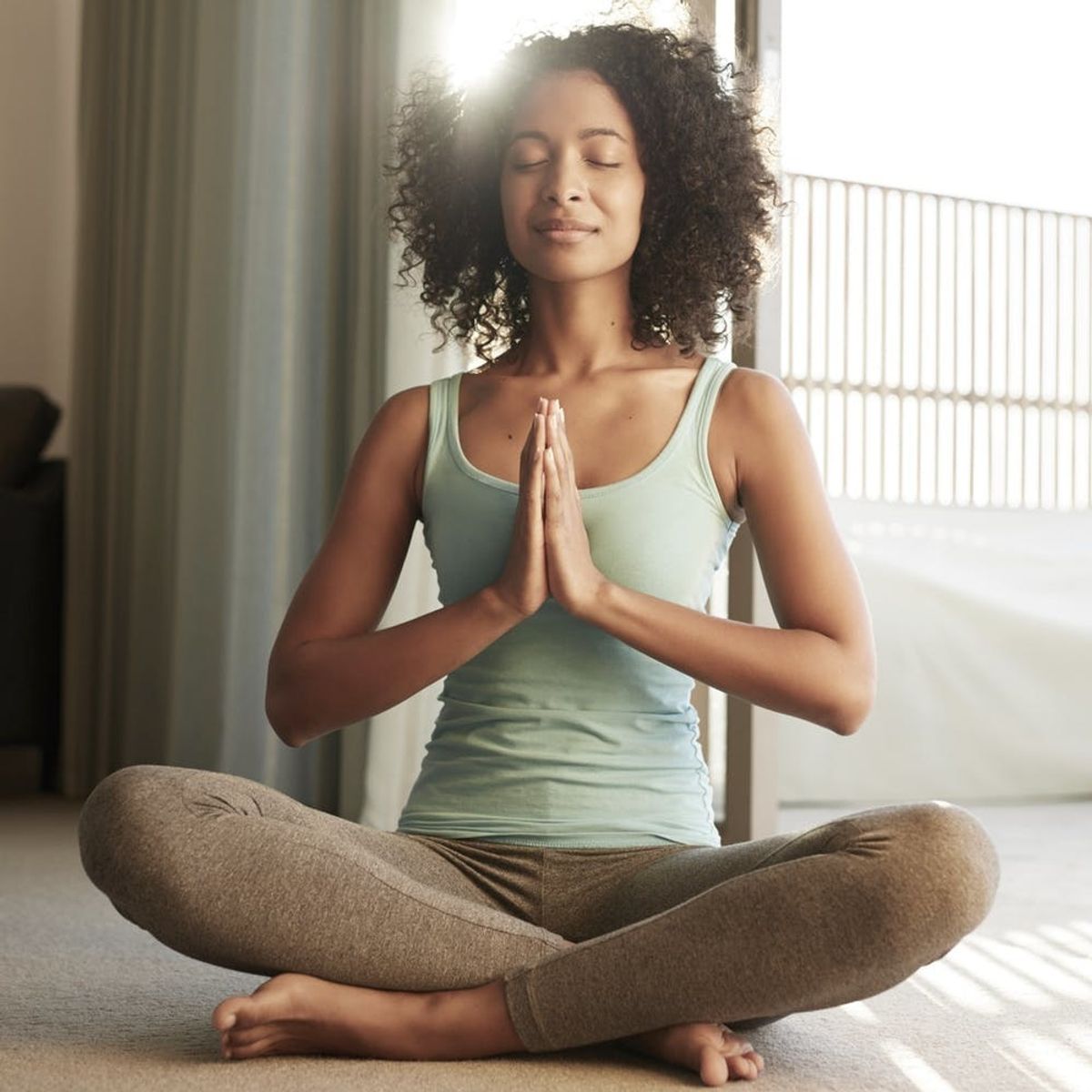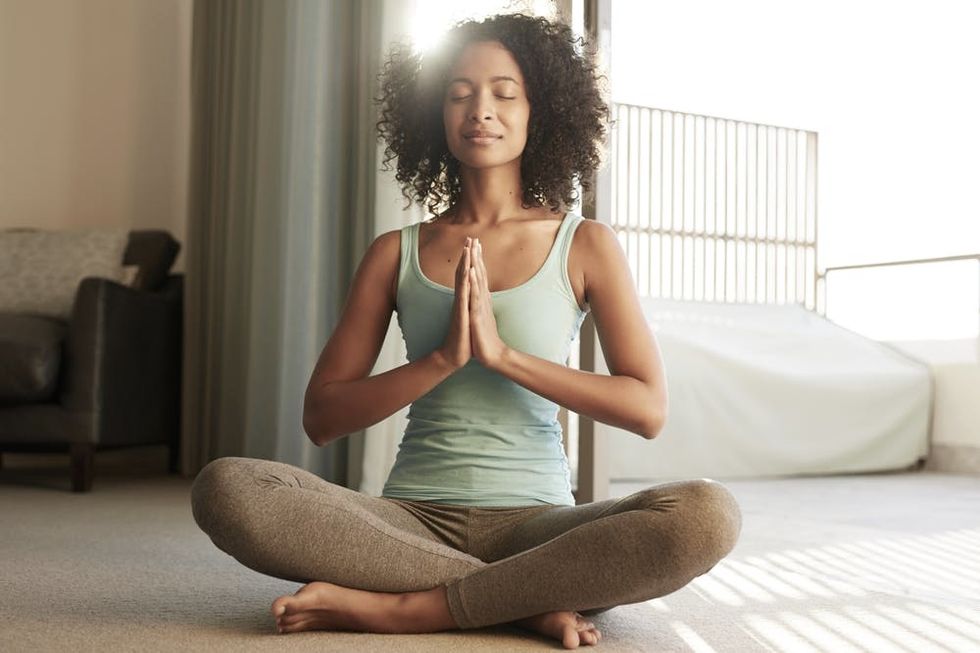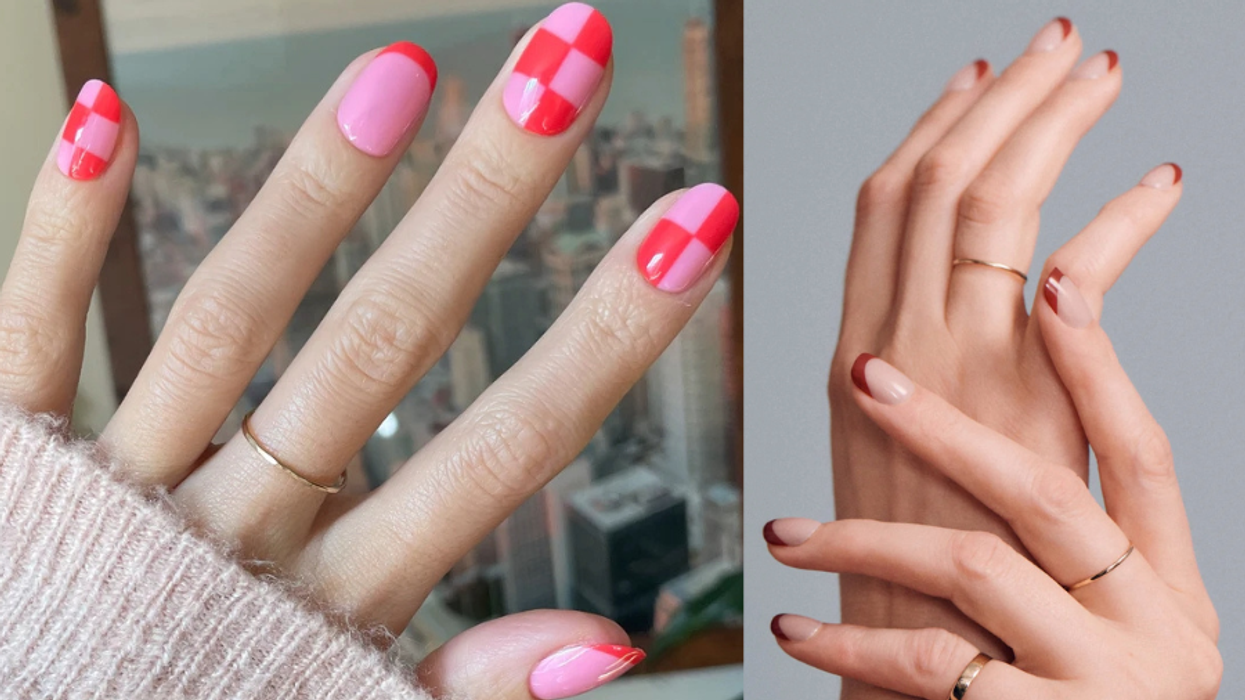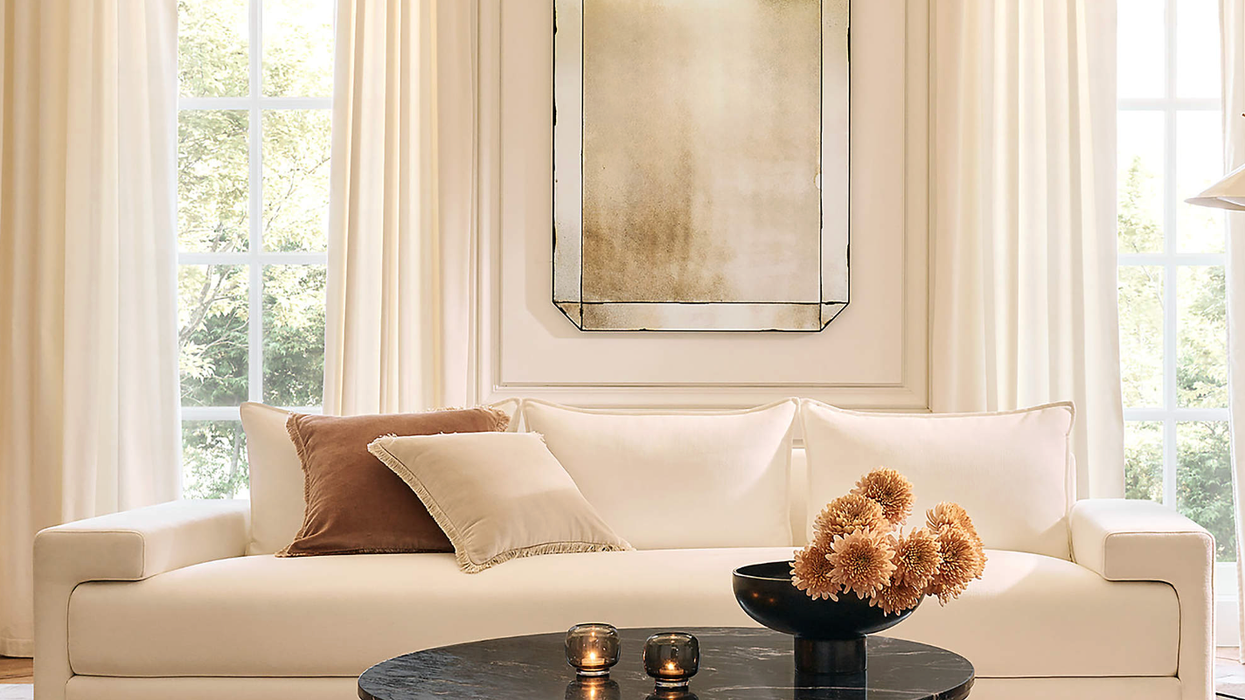Minimal effort for maximum reward.
7 Ways to Meditate Without Really Trying

Though it might feel like it takes a Herculean effort to be healthier, trying simple diet swaps, working just 10 percent harder to achieve a fitness goal, and powering down your phone before bed to get better sleep are all tiny tweaks you can make to your regular routine that can have a big impact. Another easy add is a few moments of meditation each day, which should leave you feeling calmer and more focused.
Meditation is meant to recharge the mind and body, and it can be a different experience each time. Light Walkins, the author of the forthcoming Bliss More: How to Succeed in Meditation Without Really Trying, says, “I personally experience meditation as a daily practice of sitting quietly with my eyes closed for about 15 to 20 minutes. Our body is very much a machine, and like all machines, it needs periodic rest to perform at its best.” Meditation doesn’t call for much at all — in fact, Walkins tells us that you should be able to meditate in a car, on the subway, or on an airplane by simply closing your eyes and breathing.

why should you meditate?
Meditation can be the key to better sleep. “I thought I slept well before, but meditation has improved my sleep quality tenfold,” Walkins says. “I can sleep for a shorter time but wake up feeling completely refreshed. Nowadays, instead of relying on an alarm, I just make a mental appointment to wake up at a certain time in the morning and I’ll naturally wake up at that time, with no grogginess or grumpiness.”
Other benefits include greater mental clarity, which can manifest as faster and more confident decision making. “Rarely do I spend a lot of time deliberating on things, or having to ask friends for advice. There’s nothing wrong with that, but we want to have the ability to verify and validate our choices with our own internal guidance system.”
7 Secrets for Meditating (Without Really Trying)
1. Find a distraction-free space. “Your mind won’t be able to settle if your body thinks you’re not safe,” Walkins explains. “This is why meditating outside is actually not as ideal as meditating indoors; it’s best to be in a contained environment such as a car or living room in order to go ‘deep’ in meditation.”
2. Use headphones. According to Walkins, it’s fine to meditate in public — and using headphones gets the green light. “Earphones help let people know not to disturb you. Wearing them is a tactic that you can use anytime, anywhere.”
3. Make sure you’re comfortable and supported. “When we’re physically uncomfortable, we risk keeping our mind more active,” Walkins says. “If you can, sit with back support in a comfortable position. It’ll make it easier for your mind to settle down.”
4. Focus on breathing. Like with most mental exercises, breathing is key. During meditation, Walkins advises, “Take 10 deep inhales and exhales, relaxing each part of your body in the process to relieve tension. Deep breathing is a very effective way to release that surface tension and bring you into the moment, where you’ll be able to relax into an even deeper state.”
5. Know your happy word, sound, or phrase. Walkins tells us to use a word, sound, or phrase that makes you feel happy as soon as you close your eyes. However, “This is not necessarily meant to be a point of focus,” he clarifies. “It’s a happy thought that you can rest your awareness on during parts of your meditation. Your mind enjoys happy thoughts — and you might find that the happy thought will naturally neutralize the other thoughts that we may consider distracting.”
6. Let your mind roam free. Meditation doesn’t need to be a structured exercise. In fact, Walkins tells us that it’s important to give yourself permission to let your mind explore all kinds of thoughts during your focus session. “The truth is that your mind will roam whether you allow it to or not; it’s the natural tendency,” he explains. “When your mind does meander, you passively return to your happy thought.” He also points to this approach as explored by Harvard researcher Dr. Herbert Benson, who showed it to be most effective in eliciting the relaxation response in meditation. “This is the deepest we can relax without going into a coma,” Walkins affirms.
7. Open your eyes. “After 10 or 15 minutes, slowly open your eyes,” Walkins says. “If you want to sit for five minutes longer because it feels so good, go for it! For the optimal therapeutic effect, meditate in the way described for 20 minutes.” At the very least, Walkins suggests meditating for 10 minutes. “With less time, the effects will wear off too quickly for you to feel like you get a tangible benefit,” he notes.
Do you meditate? Tell us how your practice helps you live a healthy life on Twitter @BritandCo.
(Photo via Getty)

















